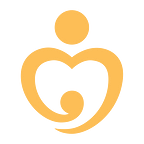Supplying Resources to Save Lives
Panchthar, Nepal
It was the peak of the rainy season when we set out to visit Maya Mabu. A blanket of rain-heavy clouds always looms low at this time of year, and short downpours are common throughout the day. The hills, cultivated with rice paddies, are a brilliant green.
Maya lives in Falaicha village in Panchthar, a district in eastern Nepal. It’s a long journey from Kathmandu: first we drove for five and a half hours in an old jeep, snaking along a dirt road that connects hilly villages with the district headquarters in Phidim and beyond. Then we walked downhill for almost two hours, following a muddy trail running along terraced farms and houses to reach her village.
We were meeting Maya to learn how she and her baby were faring three months after her delivery. She had faced complications during birth that could have cost her life. When we finally reached her two-story mud and stone house, we found her seated on the porch on a straw mat. She was grinding corn into flour while her little daughter slept nearby.
Maya, now 24, grew up in a large family of nine — three sons and four daughters. She lost her mother when she was less than a year old. School was not a priority according to the times and the customs; it was more important that Maya attend to the chores at home, in the forests and the fields. She dropped out of school in 4th grade and was married at age 14. Like most women in her ethnic Limbu community, she did not have much choice in the matter.
“I was attending a marriage of my relative, and met my husband there,” Maya says, reminiscing about that day. “We were so young then, and he was charming. Things were bound to happen, I guess.”
She had her first child at 20, and a second four years later.
Nine months into her second pregnancy, Maya was feeling a little uneasy around her abdomen. She was used to it by now, and went about her day as usual. She prepared the morning meal for her family, and took her daughter to school. The uneasiness was turning into pain as the hours passed. On the way back from school, she felt an acute pain in her stomach. She called her husband, but he had gone into the forest with the cattle, and left his cell phone at home.
Maya called a female community health volunteer (FCHV) from her village, who arranged for her to be taken to the Tharpu health post on a stretcher. A neighbor was sent to fetch Maya’s husband, and tell him to rush to the health post immediately.
At around 10:30 that morning, Maya went into labor. She had a normal delivery and the baby was healthy, but it soon became clear that something was not right with Maya. She was discharging blood and pieces of tissue, her skin cold and pale. She kept mumbling, “I’m about to die.”
A skilled birth attendant and trained nurse, Shova Katuwal, with more than 20 years experience working in Panchthar, was on duty. Shova knew she had no time to spare. She worked to stabilize Maya’s vital signs, administering a round of injections and drips. But Maya was still losing blood.
Growing nervous, Shova considered referring Maya to a district hospital in an ambulance. But she was not confident that Maya would make it. Then she decided to try a technique she had learned through One Heart Worldwide’s (OHW) training sessions, the condom tamponade.
A low cost technique that works as a kind of intrauterine balloon, a condom tamponade is created from a catheter, a male latex condom, and a string to tie the condom to the catheter. It is then inserted into the uterus and inflated. The pressure against the uterine walls works to stop refractory bleeding. For Maya, it worked.
“Thanks to the M&H Update training by One Heart Worldwide, I learned about the condom tamponade technique,” says Shova. “We were lucky to have a recent supply of the equipment.”
OHW’s initiative, Health Education Programs for Medical Providers, implements training packages for healthcare providers in the community, primary healthcare facilities and referral hospitals. The program provides knowledge and skills to better manage the most common conditions of pregnancy, childbirth, and newborns. These training packages include newborn care, birth preparedness, infections prevention training, SBA training, and advanced training programs for hospital staff. This approach rationalizes training along a continuum of care: from pregnancy through the newborn period and from the household level to the referral hospital level.
OHW has supplied Tharpu health post with equipment, and is planning to renovate the health facility through its Improvement program, under which OHW upgrades the infrastructure, medical equipment, and staffing of existing healthcare facilities to establish a network of certified birthing centers in strategic locations. In addition, we upgrade referral hospitals into facilities where comprehensive emergency obstetric care can be accessed.
In 2017, OHW trained 813 community outreach providers, 540 stakeholders, and 73 SBAs. We have upgraded 76 birthing centers and provided continuing medical education to 278 medical providers across Nepal, to save the lives of newborns and mothers like Maya.
Originally published at https://www.oneheartworldwide.org on June 5, 2018.
